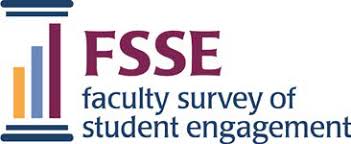Current trends of lower public investment in higher education and a greater emphasis on measurable outcomes from the college experience have led to calls for more transparency about what students are doing and learning while in college. Often lost in these discussions are the critical roles that faculty play in students' learning and development. Most faculty time studies focus on research productivity. While this emphasis is understandable given the value placed on research within the academy, it glaringly disregards faculty time allotment for, and its relationship with, good teaching.
Relying on results from a large-scale, multi-institution data set of nearly 2,000 faculty members who participated in the Faculty Survey of Student Engagement, a study presented at the AAC&U National Conference started a conversation about how faculty spend their time on scholarly activities, why they might be allocating their time in different ways, and what institutions could do to support or change patterns of faculty productivity. Participants in this session examined how much time faculty spend on teaching, research or creative work, and service activities, and connected how distinct kinds of faculty and faculty at various kinds of institutions divide their time between these three scholarly activities. They then investigated the relationships between time spent on these activities and the use of effective educational teaching practices. Participants and facilitators discuss surprising and disappointing findings such as noting that faculty who spend most of their time teaching use fewer effective teaching practices than their peers do.
In the second part of the session, participants discussed potential reasons, particularly faculty motivations, for these divisions in labor. Self-determination theory describes the factors that lead faculty to become optimally motivated to do scholarly work. When faculty needs for autonomy, competency, and relatedness are met, the ideal state of intrinsic motivation (doing a task because you enjoy it) is realized; however, when these needs are unfulfilled in some way, varying degrees of extrinsic motivation result. This session then examined the relationships between self-reported faculty motivations and how faculty spend their time. Discussion focused on how faculty who spend their scholarly time in different ways tend to have varying motivations. Although all faculty were intrinsically motivated to teach, faculty who spent most of their time teaching held this motivation most strongly. Unfortunately, these same faculty felt their basic psychological needs (autonomy, competency, and relatedness) were the least strongly met.
For more details about this study, see the presentation slides here.


